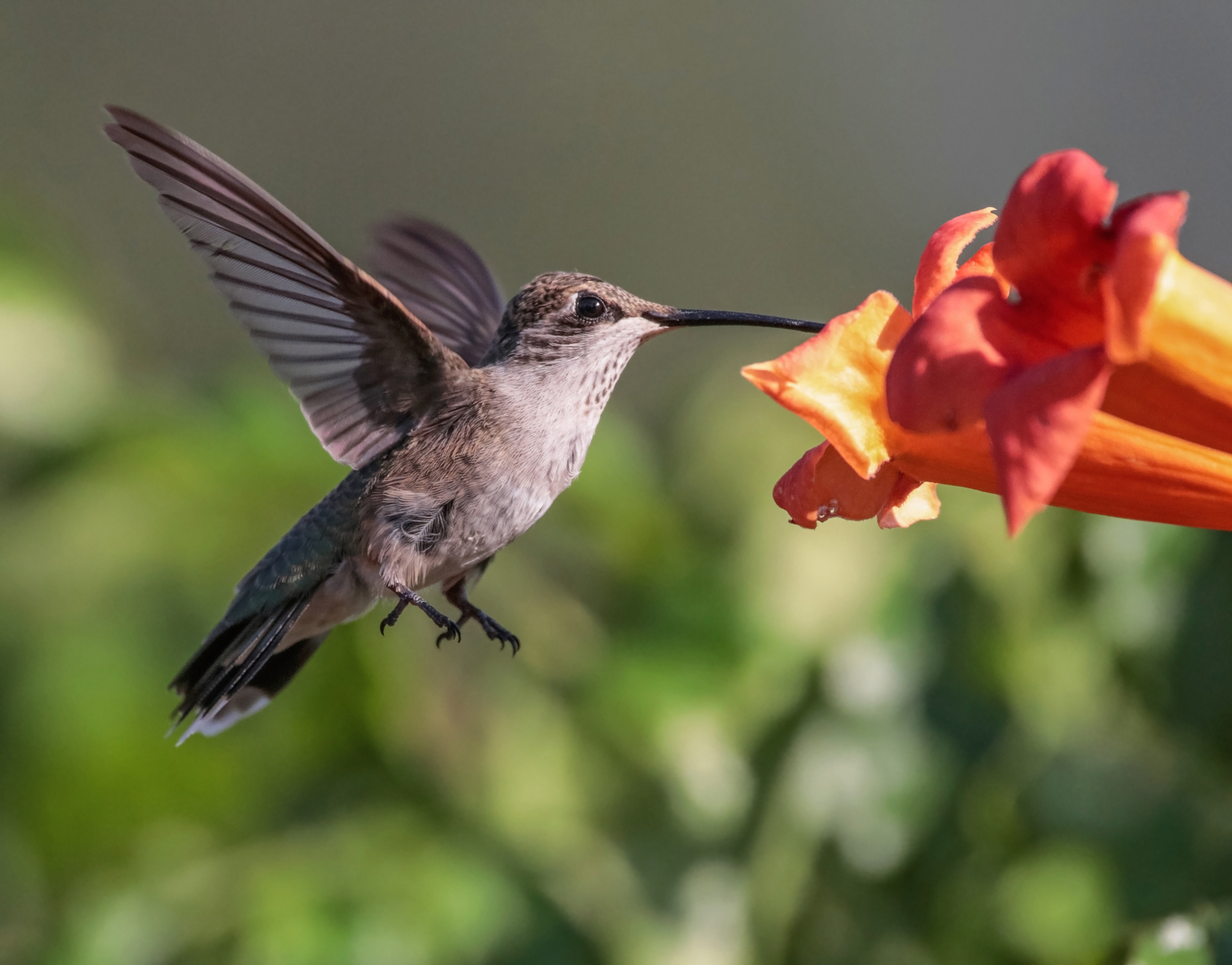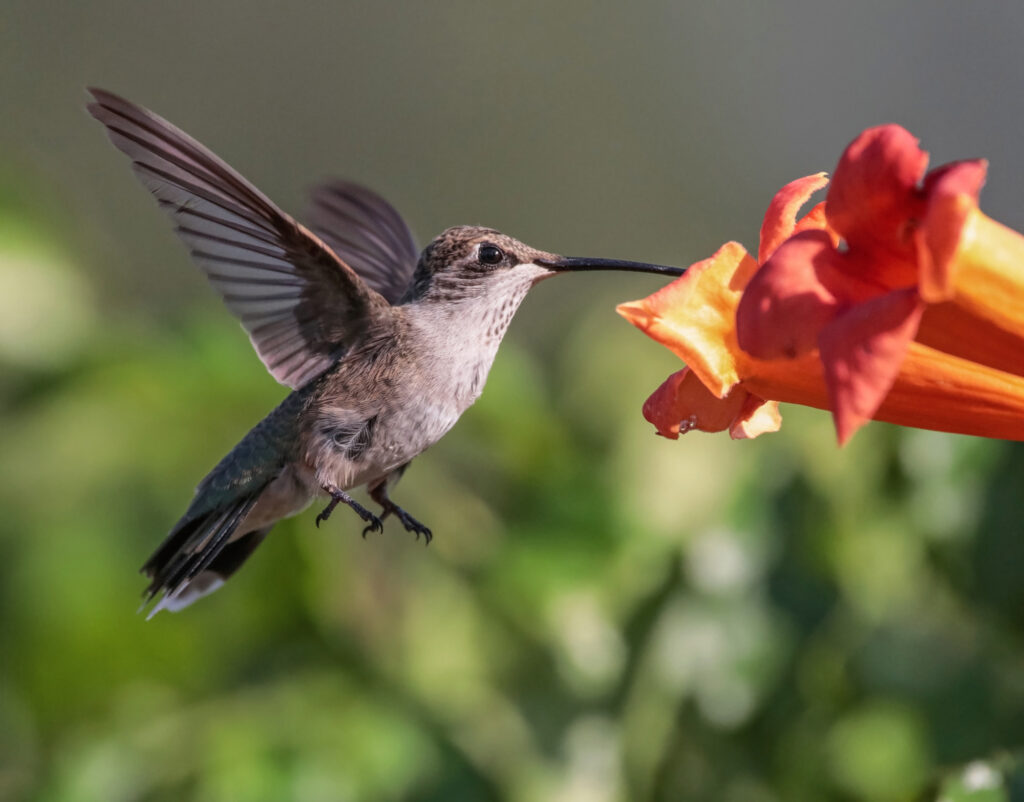Choosing the right plants is one of the best ways to attract hummingbirds to your garden and aid these amazing birds where you live.
Hummingbirds love Mandevilla, and those with tropical or subtropical gardens will find it an excellent choice.
However, in most of the United States, Mandevilla will be far more challenging to grow. Though it may benefit your bird visitors, it is not necessarily the best choice for areas outside its native range.
What Is Mandevilla?
Mandevilla is a genus of tropical and subtropical flowering plants commonly known as ‘Rocktrumpets.’
Named after the British diplomat and gardener Henry Mandeville, these flowering vines are native to the Southwestern United States, Mexico, Central America, the West Indies, and South America.
Those who live in warmer climes may already be familiar with these spectacular tropical plants, with their large, fragrant flowers in shades of white, pink, yellow, and red, and may have seen hummingbirds flitting around the fabulous flowers.
Mandevilla plants can be grown as a perennial in USDA zones 10 and 11 but are also sometimes grown in containers as an annual in areas with cooler climates.
Why Are Hummingbirds Attracted to Mandevilla?
Hummingbirds are attracted to Mandevilla because of the shape and vibrant color of the flowers. Mandevilla flowers have tube-shaped, trumpet-like blooms, the perfect shape for hummingbirds to easily probe deep into them and reach the nectar within. The bright colors, especially on plants with red blooms, attract hummingbirds.
The hummingbird and the Mandevilla have a mutually beneficial relationship. The hummingbird benefits from a nectar source that, due to the shape of the flowers, few other pollinators can reach. At the same time, the plant benefits from the hummingbird’s pollination services.
Mandevilla is also famed for attracting insect life – smaller insects that hummingbirds like to eat and butterflies, which gardeners love to see.
Mandevilla, in suitable climate zones and areas, can grow more than 6 meters high and a stockier plant can reach up to 20 meters tall! So these can be dramatic plants that will undoubtedly become a beacon and be easily spotted by any hummingbirds in the area.
Where Can Mandevilla Be Grown?
Mandevilla can only survive winter outside in the far southern reaches of the United States, in USDA zones 10 or above.
Those who live in temperate climates further north will only be able to grow these plants outdoors in a sunny, warm, and sheltered spot during the summer months. You will have to move the plant indoors or under cover if you want it to survive for more than a few months.
You can grow these relatively low-maintenance tropical garden plants in areas with a tropical or subtropical climate, high heat, frost-free winters, and relatively high humidity. Elsewhere, they will take a lot more work.
Is Mandevilla a Good Choice for Your Hummingbird-Friendly Garden?

Within its native range, Mandevilla is a good choice for a hummingbird-friendly garden. Along with a wide range of other subtropical or tropical species native to the region and suited to your particular site, it can help you create diverse and productive ecological systems.
However, planting exotic and non-native plants in more northerly gardens won’t be as beneficial for migrating and resident hummingbirds as you might think.
Yes, hummingbirds will love the nectar these popular plants provide. But that nectar (and attractants for the insects hummingbirds also need to eat) is best provided by species native to your area.
Choosing plenty of perennial flowering species native to your area will create a far lower-maintenance scheme.
Fortunately, gardeners across the US will find that other native species of flowering vines are equally attractive to the hummingbirds that visit their appealing gardens. You should be able to find native flowering vines better suited to the growing conditions that you can provide.
There will be a range of excellent hummingbird-attracting flowering vines and other flowering plants that you won’t have to work so hard to cultivate and won’t have to take inside over the winter months.
How To Grow Mandevilla
Mandevilla like heat, and lots of it. But they can still become scorched in the extreme heat and benefit from a little light or partial shade during the warmest part of the day in the hottest areas.
Though they like a relatively humid environment, these vines will thrive in the warmest climate zones without excessive watering. In containers, you will need to make sure you keep the medium from drying out entirely, but in the ground, they are reasonably tolerant of relatively low water levels.
These plants like sandy and free-draining slightly acidic – neutral soil. A peat-free multipurpose potting mix with added sand can be ideal when filling containers for these plants.
If you do decide to grow Mandevilla as an annual in cooler climes, growing in containers is the best method because you will be able to move it quickly undercover or indoors when colder weather threatens.
Remember, these plants require temperatures above 45 degrees F at all times to stay alive, and temperatures should remain above a minimum of 60 degrees F during the day.
What Alternatives to Mandevilla Might Be Considered for a Hummingbird-Friendly Garden?
Some flowering vines that hummingbirds will love that are native to other portions of the United States include:
- Campsis radicans – Trumpet creeper – USDA zones 4 to 9 – native to the eastern United States and southern Ontario and naturalized in parts further west.
- Lonicera sempervirens – Trumpet honeysuckle – USDA zones 4 to 9 – native to the eastern United States.
- Lonicera ciliosa – Orange Honeysuckle or Western Trumpet honeysuckle – USDA zones 5-9 – native to forests of western North America.
- Lonicera hispidula – Pink honeysuckle – USDA zones 7-9 – native to the west coast of North America.
- Passiflora incarnata – Purple Passionflower – USDA zones 5-9 – native to the south-eastern US.
- Bignonia capreolata – Cross Vine – USDA zones 6-9 – native to Central and Southern US.
However, you might still consider growing Mandevilla and certain other tropical or subtropical non-native plants in your garden as annuals for additional nectar over the summer months.
Other than Mandevilla, other non-native flowering vines for warmer regions that can be grown as annuals in temperate climate gardens, include Tropaeolum peregrinum, also called Canary Creeper – USDA zones 9-10 – native to Peru and Ecuador. You might also consider Manettia luteorubra, also named Candy corn vine – USDA zones 10-11, or Asarina scandens, known as Figwort – USDA zones 9-10.
One plant to add to your vegetable garden that will provide you with edible yields as well as attract hummingbirds is the scarlet runner bean, Phaseolus coccineus.
Grown as an annual in many temperate climate gardens, it is an edible crop that also attracts hummingbirds with its red flowers. So if you want to create a multi-functional garden that provides for your family and local wildlife, this is another perfect plant to consider.
In USDA zones 10-11, Lablab, or the purple hyacinth bean, might be another valuable legume to add to your food-producing garden. This will also draw in the hummingbirds to your space.

